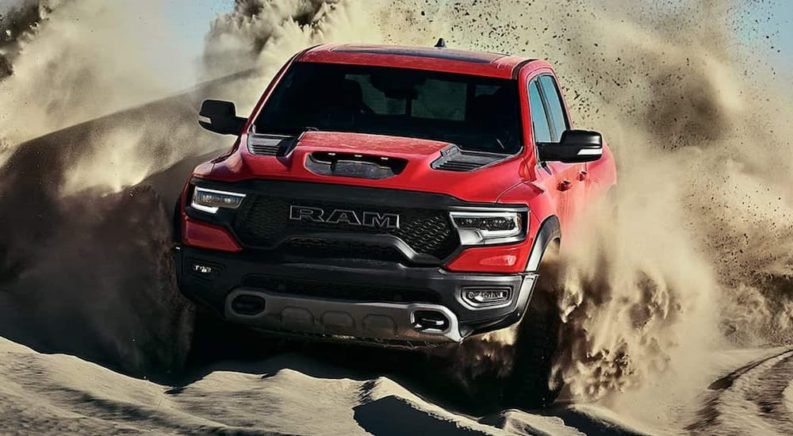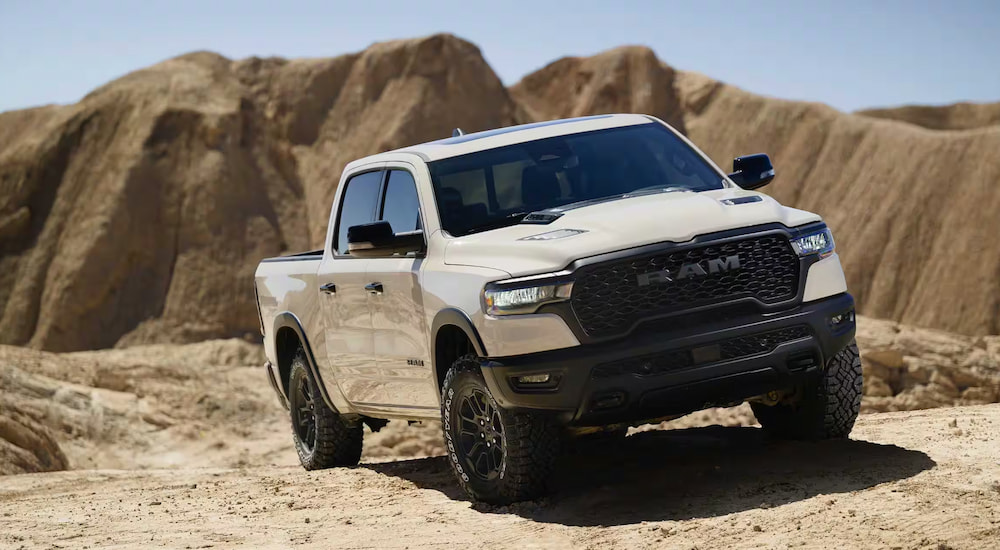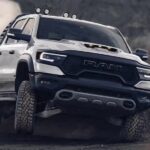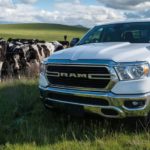For well over 40 years now, the Ram pickup has been one of the leading full-size trucks in the US; that’s a lot of years for a model to do its thing, making it older than the Chevy Silverado nameplate and almost as old as the Ford F-150. When it comes to the kinds of trucks you’ll see at a used Ram dealership, however, you typically won’t find 40 years’ worth of inventory; most of us aren’t interested in a Dodge Ram from the 1980s—unless you’re a collector or feeling particularly nostalgic—and there’s not much to be gained from the performance levels of four decades ago.
Looking back at the last decade or so gives us a much more relevant picture of what power and performance look like for the Ram 1500. In fact, I would suggest you need only look at five particular model years to get a good sense of Ram’s commitment to delivering impressive capability with their trucks. So today, I’m going to do just that, and we’ll check out five particular model years across the fourth (2012-2018) and fifth generations (2019-present) of the Ram 1500. You’ll see that, with just these five models, we get a clear picture of how power has grown and evolved for this truck over the last decade or so.
The 2013 Ram 1500
To kick things off, I thought we’d start with the 2013 Ram 1500. I thought about going with 2014 to keep it to a tight decade, but you’ll see why I didn’t in a moment. With the 2013 model, Ram had already been separated from Dodge to become its own brand and company; this isn’t the start of the fourth generation for the Ram pickup, but it’s pretty close, and the powertrains were updated for this model year, making it a significant one to mention.
Speaking of which, there were three engines on offer for the 2013 model, starting with a 3.6L V6 that offered 305 hp and 269 lb-ft of torque. (Get used to seeing this V6 because it’s going to be a common theme throughout all of these models.) For enhanced power, a 4.7L V8 was offered in 2013, granting 310 hp and 330 lb-ft of torque, as well as a 5.7L HEMI V8 that delivered 395 hp and 407 lb-ft of torque. A new TorqueFlite eight-speed automatic transmission was introduced in 2013; this was also the year a class-exclusive four-corner air suspension system became available for the Ram 1500.
The 2014 Ram 1500
It might seem strange to follow one model with the next immediate year since we’re only looking at five model years, but it’s actually pretty necessary to do so. For the 2014 model, Ram shook up the engine options for their light-duty pickup in a couple of major ways. First, they dropped the 4.7L V8 engine that had been available the previous year, which I think was the right move since it was an unnecessary option between the standard and HEMI powertrains. The TorqueFlite eight-speed automatic remained standard on the starting engine and available across all engines for the 2014 model.
Speaking of, the 3.6L Pentastar V6 engine remained standard, with its 305 hp and 269 lb-ft of torque, plus an estimated 25 MPG on the highway. Along with this, the popular 5.7L HEMI V8 was available in 2014 with 395 hp and 410 lb-ft of torque. The big news for this year, however, was the addition of a 3.0L EcoDiesel V6 engine that delivered 240 hp and 420 lb-ft of torque; this is a major addition for drivers who prefer the power and reliability of diesel engines, and it was designed to run cleaner than some other diesel ones.
The 2019 Ram 1500
It’s appropriate that this one comes in the middle of these “snapshots” because the 2019 model year was a big one for the Ram 1500; it launched the fifth generation of this truck, and there were some major changes, as you’d likely expect. All-new for 2019, the Ram 1500 received a full redesign and overhaul for boosted performance and capability while also enhancing its features inside and out for a better driving experience—and the engines were a big part of this.
Interestingly, only two engines were offered for the 2019 Ram 1500, starting with the familiar 3.6L Pentastar V6 with 305 hp and 269 lb-ft of torque. This was joined by the 5.7L HEMI V8, getting 395 hp and 410 lb-ft of torque—which seems a lot like the 2014 model, right? Well, the big news with the new generation was the addition of an eTorque mild hybrid system made standard for the starting engine and available for the HEMI V8; this adds a battery-powered motor to provide an additional 90 lb-ft of torque for the V6 and 130 lb-ft of torque for the HEMI, boosting overall power and performance to another level.
The 2021 Ram 1500
For the 2021 model year, Ram brings a diesel engine back for their best-selling pickup (as it was missing for the first couple of years of the fifth generation). While not everyone is interested in diesel engines, they certainly have their fans, and for drivers who are committed to the kind of power they provide, they’re very important. At this point, the TorqueFlite eight-speed automatic transmission has become standard with every engine, ensuring a responsive driving experience no matter what.
The standard engine for 2021 is our familiar 3.6L Pentastar V6 with the eTorque mild hybrid system, offering 305 hp and 269 lb-ft of torque, plus the supplemental 90 lb-ft of torque. A 5.7L HEMI V8 with 395 hp and 410 lb-ft of torque remains available, also with an eTorque system on offer, though it’s not standard like it is for the V6. The big news is the available 3.0L EcoDiesel V6 that delivers 260 hp and an impressive 480 lb-ft of torque, providing solid power and diesel performance. I should also mention that this year marks the addition of a TRX trim with an incredible 6.2L Supercharged HEMI V8 that delivers 702 hp and 650 lb-ft of torque; although this is certainly a niche option, its power is undeniable.
The 2025 Ram 1500
Finally, we reached the latest offering for the Ram 1500: the 2025 model year sees a mid-generation update for this pickup that includes new details and features inside and out. The biggest news for this updated 2025 Ram 1500, however, is that the engines are getting the biggest shakeup we’ve seen in over a decade; that’s because the HEMI V8—which Ram has bragged about for so long—is no more. It’s the end of an era.
If you’re a fan of the familiar, then don’t worry because the 3.6L Pentastar V6 with its eTorque system remains standard with its 305 hp and 269 lb-ft of torque. All-new, however, is the 3.0L Hurricane engine that’s been developed by Stellantis as the replacement for the old HEMI engines, bringing gas-powered performance into a new age. This available engine delivers 420 hp and 469 lb-ft of torque, which is remarkable for a 3.0L engine. Even more impressive is that there’s a High-Output version of this Hurricane engine available that boosts performance up to 540 hp and 521 lb-ft of torque. It’s a strong debut for a new engine and certainly eases the pain of HEMI V8 fans; it’ll be interesting to see where they go with this new beast of a powertrain.
Ram Prioritizes Power
Looking back over the last 12 years or so, one thing becomes clear: Ram loves power. This is reinforced year after year as they deliver impressive engine after impressive engine. It’s also interesting to see how other brands respond to what Ram does: When Ram goes all-in with premium luxury and comfort features, as well as innovative technology, both Ford and Chevy scramble to make their pickups more luxurious and feature-rich. Ram delivered the TRX with its 702-hp engine in 2021, and the Ford F-150 Raptor R hit the scene for 2023 with a 700-hp supercharged engine of its own.
So whether you’re a Ram fan or prefer a pickup from another brand, the Ram 1500 is worth keeping an eye on because it seems to be the truck that all competitors work the hardest to keep up with.






